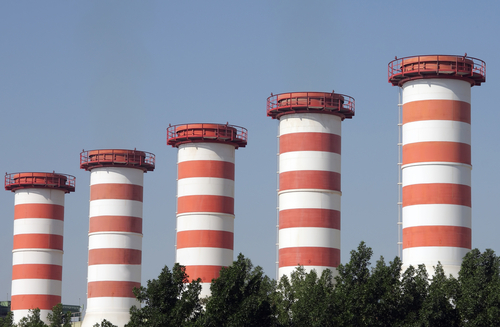EPA Targets Oil and Gas Industry Methane Emissions
 |
Methane is a potent GHG that represents a global warming potential that is more than 25 times greater than that of carbon dioxide. It is also the primary constituent of natural gas, and according to the EPA, almost 30 percent of U.S. methane emissions originate in the “oil production and the production, processing, transmission and distribution of natural gas.”
Since 1990, methane emissions from the oil and gas industry have declined 16 percent, but current projections show a rise of about 25 percent over the next decade due to continued industry growth. To limit the increase associated with this growth, the EPA is planning a number of steps to address methane and volatile organic compound (VOC) emissions industrywide.
Forget expensive calls to lawyers and consultants. With Enviro.BLR.com, you get instant access, 24/7. Try it out today and get the 2015 EHS Salary Guide, absolutely free. Download Now.
To begin, the EPA will “build on” the 2012 New Source Performance Standards (NSPS) to reduce both methane and VOC emissions through “cost-effective, commonsense requirements for new oil and gas sources that are significant emitters of methane and VOCs.” The agency plans to work with states, tribes, and industry to develop different ways to reduce methane from a variety of sources like equipment and processes, as discussed in the white papers on methane and VOC emissions released in April 2014 and that specifically addressed the following topics:
- Compressors,
- Emissions from completions and ongoing production of hydraulically fractured oil wells,
- Leaks,
- Liquids unloading, and
- Pneumatic devices.
The EPA anticipates issuing a proposed rule in summer 2015 and a final rule in 2016.
In areas that already experience ozone problems—or ozone nonattainment areas—and states within the Ozone Transport Region, the EPA plans to extend VOC reduction requirements. This will be accomplished by issuing Control Technology Guidelines (CTGs) that the EPA says “provide an analysis of the available, cost-effective technologies for controlling VOC emissions from covered oil and gas sources.”
For states, this means having to address the sources in their state plans for meeting federal ozone health standards, although states have some discretion in the application of CTGs at specific sources. The EPA plans to propose the CTGs in summer 2015, with final guidelines in 2016.
Everything You Need for Environmental Compliance
Enviro.BLR.com puts everything you need at your fingertips, including practical RCRA, CAA, CWA, hazardous waste regulatory analysis and activity, news, and compliance tools. Try it at no cost or risk and get a FREE report.
The third step in the methane reduction strategy is to continue to promote voluntary adoption of cost-effective methods to reduce methane emissions within the industry. One successful program, the Natural Gas Energy STAR program, will expand in 2015 when the EPA launches “a new partnership in collaboration with key stakeholders…” This expansion will also include working with the Departments of Energy (DOE) and Transportation (DOT), as well as leading industry firms either one-on-one or through initiatives like the Downstream Initiative or the One Future Initiative “to develop and verify robust commitments to reduce methane emissions.”
According to the EPA, these voluntary efforts, when performed “in a comprehensive and transparent manner have the potential to yield significant methane reductions in a quick, flexible and cost-effective way. Achieving significant reductions through these voluntary industry programs and state actions could reduce the need for future regulations.”
